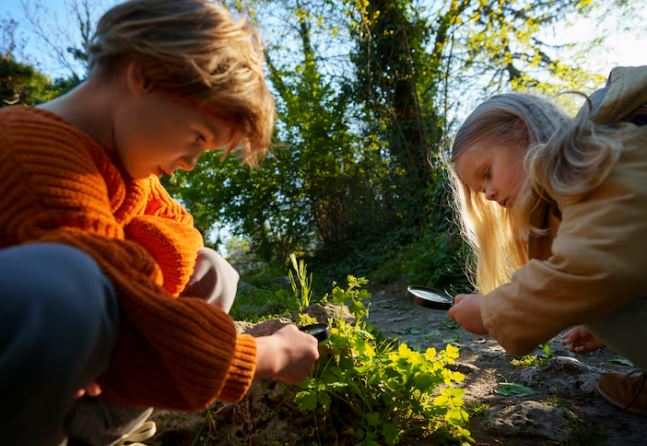
Here, the future is cultivated by young hands that bear hope like seedlings. Their excitement is remarkably reminiscent of a swarm of bees moving in unison. When thousands of actions are taken, each one is tiny but incredibly powerful.
Young people have been entering the Belfast Hills in recent years with a convincing and invigorating energy. Once-neglected habitats have significantly improved with their presence. There are places where the change is bold, and other places where it is subtle. In any case, it is proceeding gradually.
| Category | Details |
|---|---|
| Region Focus | Northern Ireland – Belfast Hills, Lisburn, Newry, Armagh, Omagh |
| Core Issue | Biodiversity decline; 11% of 2,450 species at risk |
| Youth Participation | More than 17,500 young people involved |
| Organisations Involved | Belfast Hills Partnership, Ulster Wildlife, RSPB NI, Woodland Trust |
| Key Achievements | 13,000 trees planted; river clean-ups; 30ha restoration |
| Policy Engagement | Youth input into NI Environment Strategy |
| Reference Link | belfasthills.org |
Clusters of volunteers were pressing saplings into the softened earth as I strolled through the Lisburn side of the hills. They moved in a calm, methodical, and nearly rhythmic manner. Each tree seemed to make a statement. Long-neglected soil became more stable with each new root. There will eventually be 13,000 trees in the woodland, one for each participant.
The Belfast Hills Partnership produced a project that feels incredibly durable by working with the Woodland Trust. It has a lasting effect on the young people involved, both emotionally and physically. Many people found strengths they were unaware of. Some were able to pursue new careers. Some even discovered a sense of community that they had trouble finding elsewhere.
Dr. Lizzy Pinkerton told anecdotes that demonstrated the hills’ profound mental impact on children. She talked about having more self-assurance. She spoke of having better communication abilities. She talked about how leadership came almost by accident. She spoke with the earnestness of someone who has witnessed development firsthand.
I met former volunteers who are currently employed in conservation during one visit. Simple tasks like planting trees or clearing paths marked the beginning of their journeys. Their experiences demonstrate how these programs can be especially helpful for young people who are looking for direction. Communities can support it for surprisingly little money, especially when compared to the high cost of environmental degradation.
The atmosphere was charged when forty young activists gathered at Stormont. They were very explicit in what they said. Rather than sounding frustrated, their tone conveyed urgency. They advocated for more outdoor education. They requested additional chances to work in environmental positions. When it came to policy discussions, they insisted on being heard early rather than late.
Better recycling systems were highlighted by Carson Rodgers. He cited Sweden’s strategy as an illustration that seems incredibly effective and efficient. His reasoning emphasized a straightforward reality: intentional design can result in better systems.
The 22-year-old Dakota’s comparison struck a chord right away. She talked about how quickly the pandemic caused society to change. She made a straightforward point. If a crisis can be resolved quickly, then another crisis can as well. Her comparison was incredibly direct and brimming with positive optimism.
Ciaran called for sustainable policies to be implemented. Georgia concentrated on the price of waiting. The 15-year-old Aoife reminded everyone that the facts are already known and that the amount of time we have left to save delicate ecosystems has been greatly shortened by inaction. A chorus that was hard to ignore was created by the distinct layers that each voice brought to the discussion.
Climate anxiety was a recurring theme in many of their comments. According to 17-year-old Jessica, it was gradually increasing, akin to the humidity before a storm. The weight that many young people experience was encapsulated in her analogy. Nevertheless, these same youths keep acting in spite of the consequences. That resolve is especially creative because it transforms anxiety into action.
Projects promoting biodiversity are growing throughout the hills. Rivers are cleaned by volunteers. Trails are restored by them. They tend to patches of wildflowers. They bring pollinators back into areas where they had all but disappeared by creating pockets of life. These activities promote community cohesion, mental health, and agriculture. Despite their diminutive size, they exhibit remarkable durability when replicated throughout various landscapes.
Opportunities for funding give things more impetus. Youth-led wildflower project grants seem very flexible and adaptable. Campaigns for match funding allow small charities to expand. Habitat restoration is supported by larger grants, sometimes at remarkable scales. These funding channels give young activists the tools they need to take their ideas from concept to reality.
Ulster Wildlife and the Belfast Hills Partnership keep moving forward with new initiatives like Wild Youth. The goal of these programs is to involve youth from diverse backgrounds. Because it fosters opportunities for personal development and introduces new viewpoints, this inclusivity is especially advantageous.
From a distance, the motion is like that of bees: busy, deliberate, and well-coordinated. Their activities span policy rooms, schools, and hillside. Every task builds on the one before it. Every voice elevates every other one. When combined, they create a network that seems incredibly trustworthy and genuinely optimistic.
Young people in Northern Ireland are creating a more environmentally friendly future by planting trees, influencing policy, and performing restoration work. They are making steady progress. They are infectiously optimistic. They have an impact much more quickly than many anticipated. Additionally, their dedication is remarkably resilient.